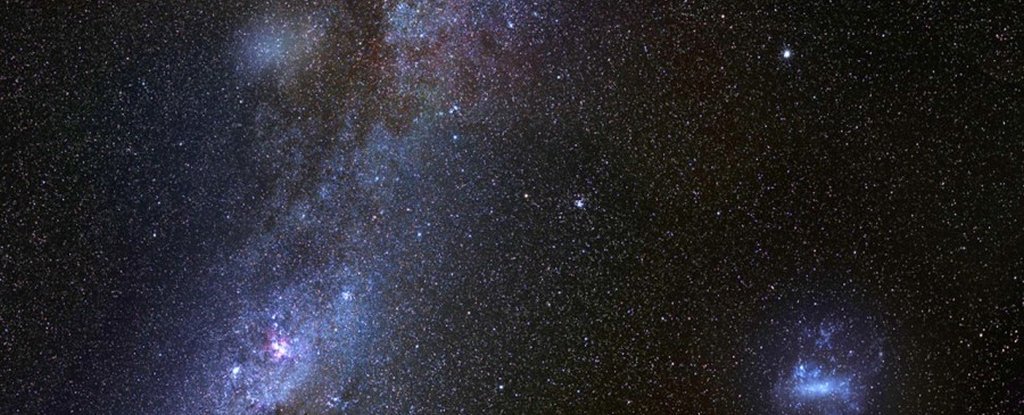Massive Ancient Galaxy Orbiting The Milky Way Discovered By Astronomers

Similar to the moons that orbit planets and planets that orbit stars, the stars are also orbiting galactic cores, while galaxies themselves orbit other galaxies. Our home galaxy, the Milky Way, also possesses some orbiter such as the Large and Small Magellanic Clouds. However, the astronomers recently discovered a massive ancient galaxy orbiting the Milky Way.
Using the data gathered by ESA’ Gaia which created the most comprehensive map of our sky, the scientists identified a massive ancient galaxy that is orbiting the Milky Way. The newly found space object is as big as the Large Magellanic Cloud (roughly one-third of the Milky Way), and it’s visible in the southern constellation Antlia (The Pump).
Dubbed as Antila 2, this massive ancient galaxy managed to stay hidden from the sight of our telescopes, mainly because it’s mostly concealed behind the Milky Way’s disc but also because it’s very dim as it is by 10,000 times fainter than the Large Magellanic Cloud.
Massive Ancient Galaxy Orbiting The Milky Way Discovered By Astronomers
As it is the faintest galaxy ever depicted by scientists for the time being and lacks star-forming gases, the astronomers believe that Antila 2 is just the remnant of an older, long-dead galaxy. “This is a ghost of a galaxy,” said Gabriel Torrealba of Academia Sinica in Taipei.
“The simplest explanation of why Antila 2 appears to have so little mass today is that it is being taken apart by the Galactic tides of the Milky Way,” added Sergey Koposov, an astronomer at the Carnegie Mellon University. “What remains unexplained, however, is the object’s giant size. Normally, as galaxies lose mass to the Milky Way’s tides, they shrink, not grow,” he added.
“Compared to the rest of the 60 or so Milky Way satellites, Antila 2 is an oddball. We are wondering whether this galaxy is just the tip of an iceberg, and the Milky Way is surrounded by a large population of nearly invisible dwarfs similar to this one,” concluded Matthew Walker, also an astronomer at the Carnegie Mellon University.
0 comments